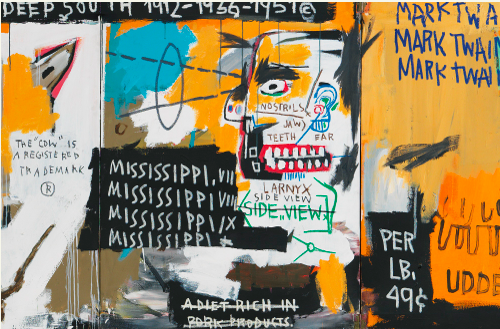Analysis
The Strangely Attractive Case of Guaranteed Lots at Auction
Who reaps the benefits and who takes the greatest risk?

Who reaps the benefits and who takes the greatest risk?

Asher Edelman

Let’s take a look at guaranteed lots. How many of them are being offered at the contemporary night sales this week?
Sotheby’s has guaranteed or arranged guarantees on 39 works of art out of a total of 81 pieces in the sale. The dollar amount of these guarantees we estimate to be in excess of $200 million. Christie’s has guaranteed or arranged guarantees for 39 works, as well, out of a total of 72 total works for sale. We believe Christie’s guarantees to exceed $250 million in value.
At these auctions, it’s the guarantors who hold all the information cards. Members of public—except for the guarantors—will not be informed of the most recent provenance (sometimes not even the past provenance); the terms of the guarantees (profit shares, commission shares, financing fees, and so forth); or the edge the guarantor has over other bidders should he or she buy the work. The public might not even be informed as to whether the work sold or not.
Simply put, the guarantor is participating on better terms than any other bidder. One would think this extensive rough patch in a so-called level playing field would deter bidders from trying to purchase guaranteed lots. Yet in fact guaranteed lots offer a huge advantage to non-guarantor bidders.
As has always been evident in past years, guarantees are arranged via the auctioneers, often with the houses committing or financing the guarantee early on and then replacing or reselling the guarantee to an investor or collector. The auction houses act as underwriters of these transactions, often as principal before, during, or after the sale is put together. Not all guarantees are passed on to third parties. What happens is that the auction house (the underwriter) mates an asset (an artwork) with a financial product (the guarantee) and then offers that combination (a security, by definition) to the public by way of the auction process.
But not much light has been trained on the fact that this coupling (an artwork and a guarantee) constitutes a security. If indeed such offerings are securities, then there are disclosure rules that should already been established and certainly need to be established now—and followed. Because if a concomitant level of disclosure is not offered to the buyers, it’s possible that the underwriter—the auction house—could be permanently liable for any losses incurred by buyers of guaranteed lots whether or not the house is the continuing guarantor or lays off the bet on a third party.
Think about this. A firm would not offer a preferred stock without telling a buyer the interest rate or the low allowable issue price. It would need to indicate who was selling, i.e., the company or shareholder, and specifically designate the distribution of funds and of commissions.
None of these rules have been followed in the case of offering guaranteed priced art, and, further, the actual sale prices are distorted by the nature of the guarantee.
Will this observation prompt additional disclosure in the auction process? Will it attract buyers who will view it as a secondary guarantee against their future losses? Will the excessive speculative climate at the evening sales subside? Will the regulators come knocking at the door?
All is possible but the best result will be full disclosure and a return to a level playing field.

Asher Edelman
This the first of a series of writings by Asher Edelman focusing on the economics of art and related topics. Reach him at [email protected].